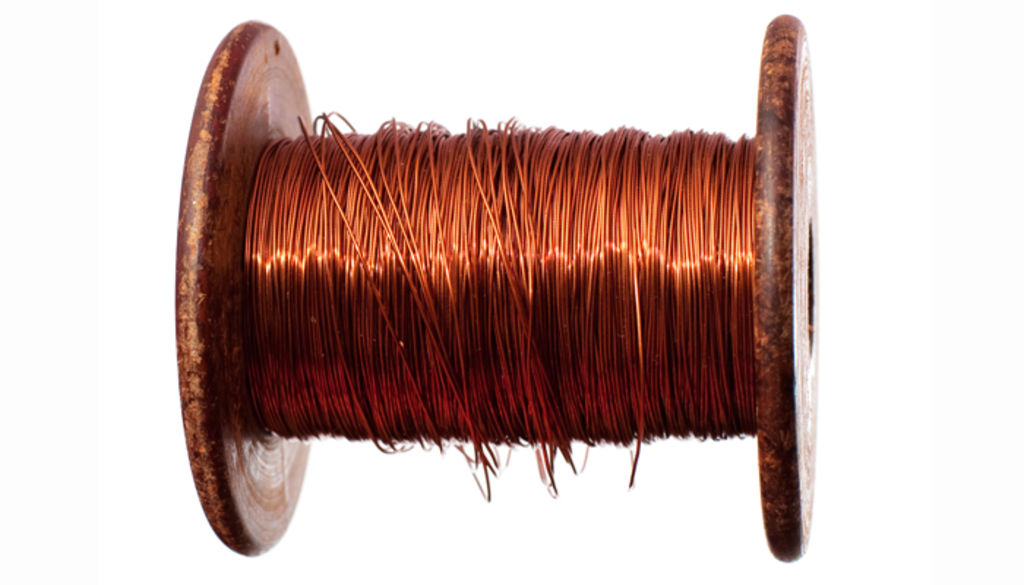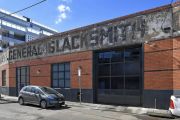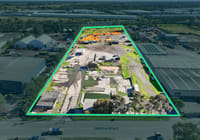
The best and the worst architectural and interior designs of 2015
This year has produced some memorable images that will certainly resonate well into next year and beyond.
Walking into a house where a blank concrete wall opens to a treasure trove of architectural delights, or stepping into a courtyard where suspended trees defy gravity, are just some of the highlights.
But along with the highs, are also the lows.
Let’s be realistic; not everything can be amazing, nor should it be. Otherwise everything would be uniform.
And there’s more than enough uniformity in the design world.
Generic designs will always be forgettable, but some of the worst design for 2015, along with the best, will also resonate well into the new year.
So to appreciate the very finest for the year, let’s start with some of the worst things designers themselves have encountered.
Poor acoustics
Interior designer Christopher Hansson, co-director of Inarc Architects, doesn’t have to think too long before nominating a great design flaw that appeared to worsen this year.
“Restaurants are becoming noisier and there seems to be less consideration given to acoustic control,” he says.
“You find yourself screaming across a table. It’s as uncomfortable as some of the chairs provided.”
 Restaurants caught the experts’ attention – for all the wrong reasons. File photo: iStockphoto
Restaurants caught the experts’ attention – for all the wrong reasons. File photo: iStockphoto
As well as poor acoustics, Hansson has encountered more than enough clusters of brass and copper lights in restaurants, as well as in homes.
“It’s not just the reflections. It’s also the bulk of the individual circuits on the ceiling,” he says.
 Have we seen enough of copper? Photo: Supplied
Have we seen enough of copper? Photo: Supplied
This year, there was a greater tendency to create eclectic interiors with random groups of disparate objects somehow supposed to create a mood.
“Some of these arrangements seemed orchestrated, rather than being things the owners had collected over time,” he says.
One feature that will certainly stand out in 2015 is referred to by Hansson as “calamine lotion pink”, or the colour once used as a primer to undercoat a timber fence.
“People jump on the same bandwagon, rather than considering whether the colour suits the room, or even their tastes,” he says. “The walls look unfinished.”
 Forgettable: Calamine lotion pink on walls.
Forgettable: Calamine lotion pink on walls.
Amateur art, pastel colours
Interior designer Mardi Doherty, director of Doherty Design Studio, identified what she terms a “crazy movement” this year, with amateurish art displayed throughout homes (and she’s not taking about the adorable work produced by children that finds its way onto fridges).
“Some of it takes the form of calligraphy, a quote on canvas,” says Doherty.
“‘Our lives are like a blank canvas. It’s up to us to paint the picture’ is one such quote, or ‘Smile and the world smiles with you’. You see these slogans plastered on walls in homes and right through social media.”
 ‘Crazy’ movement: Slogans as artwork.
‘Crazy’ movement: Slogans as artwork.
She also suggests that some of the colour choices for walls this year were disappointing.
“A lot of the pastels used this year ‘flattened’ a room. They were often just as disappointing when worn. Most people can’t wear flesh-coloured clothes.”
These pale hues were often expressed in furniture. The milk stool, which must have been the staple in every homewares shoot, started with good intentions.
“Thonet started the trend by dipping the legs of their classic bentwood chairs into paint,” Doherty says. “You then started seeing the same thing done with these milk stools.”
Fast solutions
Broderick Ely, Design Director of B.E. Architecture, saw a strengthening of quick fixes over 2015, with many in the building industry producing work as though it was being packaged up on a conveyor belt.
“I don’t think there was enough time for reflection and to produce creative work in some arenas,” says Ely, who feels that a lot of what was built this year was “louder, brighter and busier”.
“There were endless apartments produced, often sprouting up in just a few months. Great design requires a slower and more considered approach.”
 Considered approach: A naturalistic style garden designed by b.e. Architecture. Photo: Earl Carter
Considered approach: A naturalistic style garden designed by b.e. Architecture. Photo: Earl Carter
Ely is also disappointed with the quality of domestic landscapes, many looking cookie-cutter-made.
“A garden should evolve, rather than being an instant fix. You should be able to look out of your living room window and feel part of the naturalist – rather than artificial-looking – landscape around you,” says Ely, who gets as involved in landscaping as in selecting the materials for interior spaces.
Flinders Street apartments
One landscape design – although hardly naturalistic – which did send my vision into overdrive was the work of Tract Consultants in collaboration with Fender Katsalidis Architects and graphic designer Garry Emery.
The courtyard of the apartments at 108 Flinders Street, Melbourne, takes the art of surrealism to a new level.
 Next level: The vertical green wall at 108 Flinders by Tract Consultants and Fender Katsalidis. Photo: Supplied
Next level: The vertical green wall at 108 Flinders by Tract Consultants and Fender Katsalidis. Photo: Supplied
Designed by landscape architect Steve Calhoun from Tract, the atrium-style courtyard features a vertical green wall and potted trees artfully suspended from cabled wires like a series of chandeliers.
While appearing real, each leaf within this masterful concoction is made from plastic, ideal for a harsh inner-city environment that’s short of natural light and privacy.
Water in the form of a shallow pond above a basement car park allows magical light to filter into the depths below.
The water wall also muffles the city soundscape, and Emery’s psychedelic mural, loosely depicting the Garden of Eden, takes you into another world.
MPavilion: Extraordinary
 Surprising: MPavilion at the Queen Victoria Gardens, Melbourne, on its opening day in October. Photo: Pat Scala
Surprising: MPavilion at the Queen Victoria Gardens, Melbourne, on its opening day in October. Photo: Pat Scala
One of the other great surprises of this year was architect Sean Godsell’s MPavilion, in the Queen Victoria Gardens, opposite Melbourne’s National Gallery of Victoria.
Constructed as a series of steel sheets that responded to the changing weather conditions, this pavilion, orchestrated by the Naomi Milgrom Foundation, was a moment to experience, irrespective of the weather.
House turns convention on its head
 Memorable: The Mexican Contemporary House by Andres Casillas de Alba and Evolva Architects was a standout.
Memorable: The Mexican Contemporary House by Andres Casillas de Alba and Evolva Architects was a standout.
Equally memorable was taking a group of architectural buffs who took part in one of my architectural tours to visit the Mexican Contemporary House, designed by Andres Casillas de Alba and Evolva Architects.
Behind its monumental concrete facade lies an extraordinary building that turns the conventional house on its head.
A living room platform, elevated above a street-like laneway, is as delightful as the childlike shutters-windows lined in pink that look onto generous voids and glazed outlooks.
As those who attended on the day remarked, “How could you possibly show us anything better?” I would certainly be the last to disagree.











